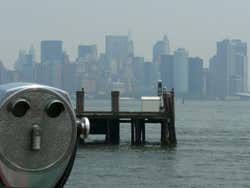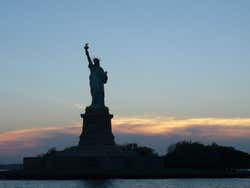
History of New York
Learn about the foundation of New York City in the 17th-century and find out how it has changed throughout the centuries, becoming one of the main financial centers in the world and the most populated city of the United States.
The first explorer to arrive in New York Bay in 1524 in the service of the French crown was the navigator Giovanni da Verrazzano. The area, which he named New Angoulême, was inhabited by the Algonquins and Iroquois Native Americans.
The Arrival of the Dutch
The second navigator to explore the bay in the service of the Dutch was Henry Hudson in 1609, giving his name to the Hudson river.
The Dutch were the first Europeans to settle in the area, building Fort Nassau in 1614, the first European settlement in the area today known as New York.
In 1626, Peter Minuit, Governor of the Dutch West India Company bought the island of Manhattan from Native Americans for 24 dollars and founded a colony called New Amsterdam. The colony developed a profitable fur trade in the region with the Native American tribes.
In 1674, as a consequence of the Treaty of Westminster, the island of Manhattan was passed to the English, who renamed it New York in honour of the Duke of York. A few years later, King James II established the Dominion of New England, comprising all of the neighboring colonies.
With the presence of the British, New York became an important and prosperous commercial port, and in 1754 Colombia University was founded, which is today one of the most prestigious in the world.
Conflicts in New York
Throughout the eighteenth century, the English settlers and the French fought for the control of Manhattan, conflicts in which the pilgrims managed to involve the different Native tribes in their causes.
New York played an important role in the American War of Independence, witnessing several battles. In 1775, fighting broke out between independent militia, and the British, and a year later, the United States was voted independent. However, the State of New York did not ratify the Federal Constitution until 1788.
In 1789, Congress assembled in New York which elected George Washington as President. NYC became the Federal Capital for a year until it was moved to Washington D.C.
During the 1820’s, New York became the center of the abolitionist movement. Moreover, in 1863, New York witnessed the Draft Week, violent disturbances that took place to condemn a new law passed by Congress to draft men to fight in the ongoing American Civil War.
The economic growth and immigration transformed the city, making New York City the largest town in the States in 1835.
Up until 1898, New York was made up of only Manhattan. Later, the districts of Brooklyn, Queens, The Bronx and Staten Island became part of the city. This was made possible thanks to the construction of many of its famous bridges and Subway in 1904.
New York During the Twentieth Century
During the twentieth century, New York grew immensely. The Statue of Liberty observed the arrival of millions of immigrants (in 1948 New York was the world’s most populated city, surpassing London). It became the hub of European, Asian and Latin-American immigration.
After World War II, New York became the world’s most important city with great economic (Wall Street), political (UN Headquarters) and cultural relevance (replacing Paris as the mecca of art and culture). Thus, becoming a great international tourist site.
The tragic terrorist attacks that took place in New York on 11 September, 2001, had far-reaching consequences in the States and in the rest of the world, establishing new security standards both in the city and worldwide.
Today, New York is a dream destination for travelers from all over the world thanks to its appearance in hundreds of books, films and series.

